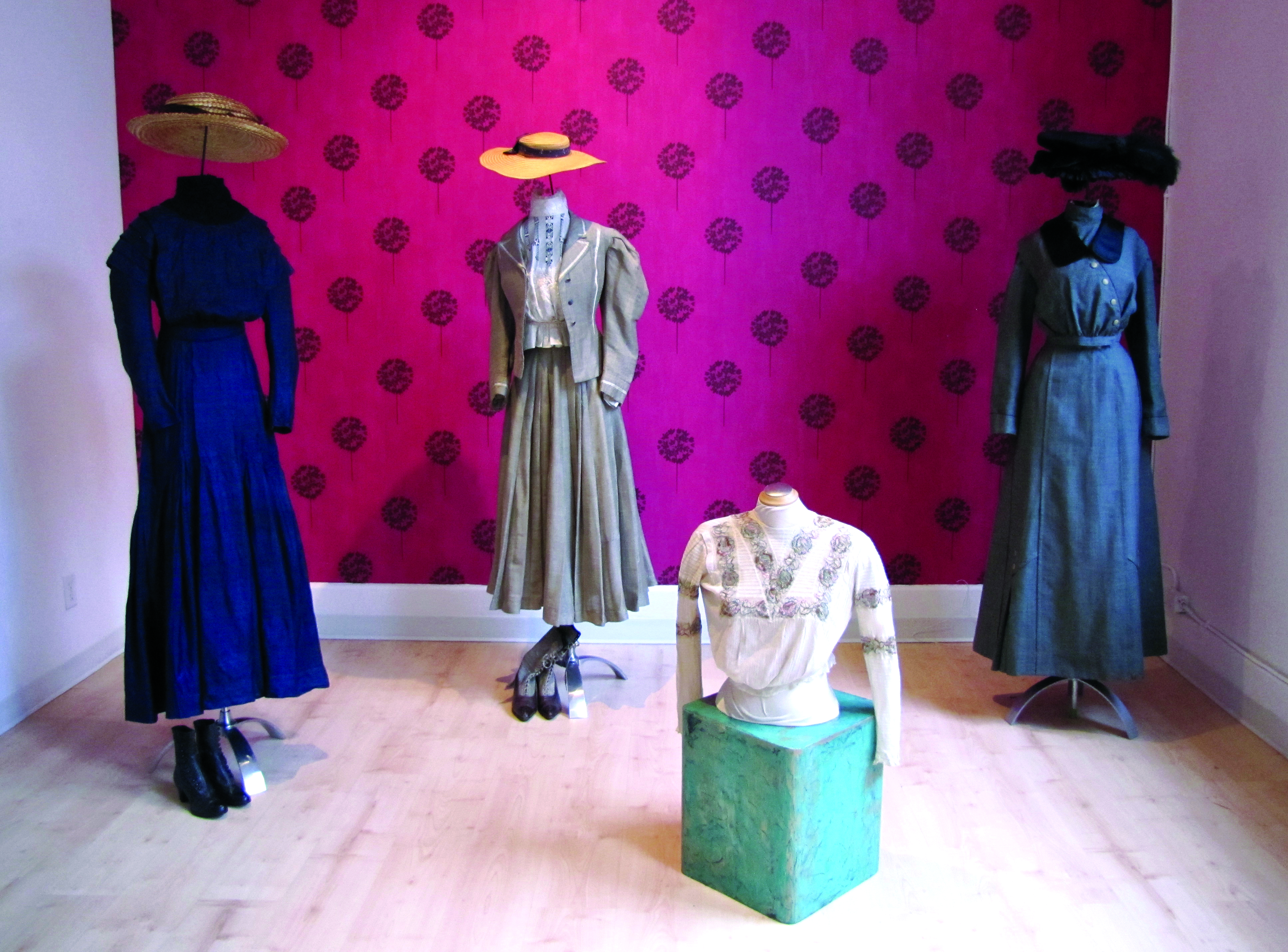History is written in many forms – through buildings and books, our everyday lives, and the clothes we wear.
In the latest exhibit from the Costume Museum of Canada (CMC)—From Bloomers to Bikinis: Women’s Wear and Social Change—history is written in patterns, hemlines, and colours.
“The Costume Museum is neither a fashion nor a history of fashion museum,” says Jo Ann Greisman, treasurer for the Costume Museum of Canada. “The CMC is a material history museum focusing on what we wear. It looks at apparel and accessories in relation to social history.”
As you walk through the exhibition, expect to see carefully put together outfits for everyday life and for special occasions, along with explanations of the historical moments that created them. One dress from the 1950s appears to be made from old flour or sugar sacks, in a bright floral pattern that was unusual for the time.
“Everything was recycled during the war,” Greisman explains. A small scrap of velvet may be salvaged and used for a trim, or a collar from an old dress would be transferred to another.
“Buttons were not easily available [ . . . ] so most buttons were reused from another dress.”
Moments such as the Persons Case, World War II, the availability of the birth control pill, and the amendment of the Indian Act, are highlighted in the exhibit. As these events affected many women’s private and public lives, including increasing and decreasing participation in the workforce and rates of university graduation, they were also reflected in the clothes being made and worn.
In the early 1900s, hemlines rose ever so slightly as the bicycle gained popularity, and skirts were designed so that they could be gathered up for ease of movement. In the 20s, with the rise of the flapper, they rose again, then snuck down in the 30s, and crept back up in the 40s.
Greisman explained that many of these aesthetic conventions were also reflections of not only what women wanted, but what society at large—and the government—wanted of them.
Smart dress suits showed up for working women throughout the war, but the desired silhouette became hyper-feminine in the post-war period, reflecting the pressure for women to step back from the workforce into their traditional feminine roles. There was a push towards propriety: Greisman notes that the 50s were huge for hats.
“You couldn’t go anywhere without hats and gloves.”
The exhibit runs up to the 80s, and also includes the 2000s, labelled as a “mash-up era.” Greisman explains that it’s harder to find a common thread, a theme, or a few exemplary styles of a time while we’re living in it. Looking back, we may be able to pick out some outstanding looks, but the attitude towards clothing—and manufacturing—has also changed.
“It’s hard for people to save clothes when they don’t know that it’s going to be valuable,” says Greisman. The CMC’s collection—all 35,000 pieces—were procured through donations. Many people aren’t aware of the historical value of what’s in their closet, and these days, she says, many items will simply end up in the trash or at the secondhand store within a year.
However, they are still welcoming donations of well-preserved items, especially from the 50s and 60s. If they don’t collect them now, says Greisman, they will be lost forever.
While it is entirely volunteer-run, and will not have a dedicated space as a formal museum, the CMC is aiming to continue holding exhibitions, like this one, that pair apparel and history in temporary spaces for at least a month at a time.
Beyond history, many pieces are simply wonders on their own. The beadwork—all done meticulously by hand—on some of the dresses from the 20s is astounding. While we may look back at these pieces as costumes, they remind us that in daily life, our clothing is a distinct reflection of our current social space.
From Bloomers to Bikinis will be open at 264 McDermot Avenue until Oct. 26. Gallery hours are Tuesday, Wednesday, and Saturday from noon until 6 p.m. and Thursday and Friday from noon until 9 p.m. For more information, visit costumemuseumcanada.wordpress.com.


